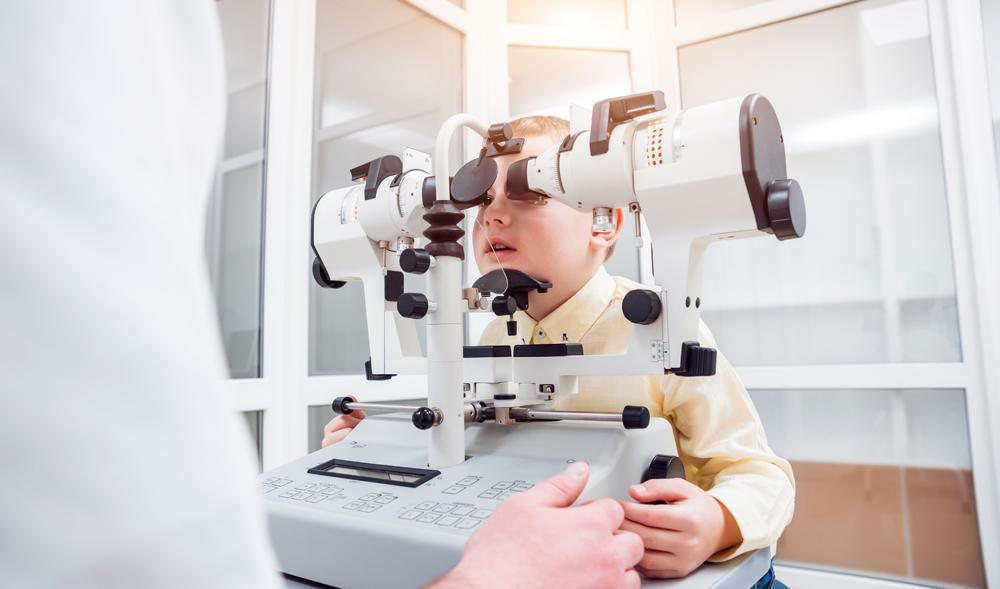High-grade Retina Service Near Me: Leading Eye Care Providers
High-grade Retina Service Near Me: Leading Eye Care Providers
Blog Article
The Role of Advanced Diagnostic Equipment in Identifying Eye Disorders
In the realm of ophthalmology, the usage of innovative analysis tools has actually changed the early identification and monitoring of numerous eye problems. As the demand for accurate and prompt medical diagnoses continues to expand, the combination of advanced tools like optical comprehensibility tomography and visual field testing has come to be indispensable in the world of eye care.
Significance of Early Diagnosis
Very early diagnosis plays a crucial function in the reliable administration and treatment of eye conditions. Timely identification of eye conditions is vital as it enables punctual intervention, possibly avoiding more development of the condition and lessening long-term issues. By finding eye conditions at a beginning, medical care suppliers can supply proper treatment strategies tailored to the certain problem, ultimately resulting in far better outcomes for clients. Very early diagnosis makes it possible for individuals to accessibility essential support solutions and sources quicker, enhancing their general high quality of life.

Modern Technology for Finding Glaucoma
Innovative analysis modern technologies play a critical role in the very early discovery and tracking of glaucoma, a leading cause of irreparable loss of sight worldwide. One such technology is optical coherence tomography (OCT), which supplies in-depth cross-sectional pictures of the retina, allowing for the measurement of retinal nerve fiber layer thickness. This measurement is essential in evaluating damage caused by glaucoma. One more advanced device is aesthetic area testing, which maps the level of sensitivity of a patient's visual area, helping to discover any kind of locations of vision loss attribute of glaucoma. Additionally, tonometry is utilized to measure intraocular stress, a major danger variable for glaucoma. This test is essential as elevated intraocular pressure can lead to optic nerve damages. Newer modern technologies like the usage of synthetic intelligence formulas in examining imaging data are revealing promising results in the early discovery of glaucoma. These advanced diagnostic tools enable ophthalmologists to detect glaucoma in its beginning, enabling for prompt intervention and much better monitoring of the condition to stop vision loss.
Role of Optical Comprehensibility Tomography

OCT's capacity to evaluate retinal nerve fiber layer thickness allows for precise and unbiased measurements, helping in the very early discovery of glaucoma even prior to visual area problems emerge. Furthermore, OCT modern technology permits longitudinal surveillance of structural adjustments gradually, assisting in customized therapy plans and timely treatments to help maintain patients' vision. The non-invasive nature of OCT imaging also makes it a recommended choice for checking glaucoma progression, as it can be repeated consistently without causing discomfort to the patient. Overall, OCT plays an important function in boosting the diagnostic accuracy and monitoring of glaucoma, inevitably adding to better results for people in jeopardy of vision loss.
Enhancing Diagnosis With Visual Field Screening
An important component in extensive ophthalmic evaluations, visual area screening plays an essential function in enhancing the analysis procedure for different eye find out this here problems. By click this link evaluating the full level of a person's visual area, this examination offers important information concerning the useful integrity of the whole visual pathway, from the retina to the visual cortex.
Aesthetic field screening is especially important in the diagnosis and monitoring of conditions such as glaucoma, optic nerve problems, and numerous neurological illness that can affect vision. Via quantitative measurements of peripheral and main vision, clinicians can detect refined changes that might indicate the visibility or development of these problems, even before visible signs and symptoms happen.
In addition, aesthetic field screening enables the tracking of treatment efficacy, helping ophthalmologists customize therapeutic treatments to individual clients. eyecare near me. By tracking changes in aesthetic field efficiency gradually, healthcare carriers can make educated choices concerning adjusting medicines, advising surgical interventions, or carrying out various other appropriate steps to protect or improve an individual's aesthetic feature
Managing Macular Degeneration

Final Thought
In verdict, progressed analysis devices play a crucial role in recognizing eye disorders early on. Technologies such as Optical Comprehensibility Tomography and visual area screening have greatly improved the precision and performance of detecting problems like glaucoma and macular deterioration.
Report this page